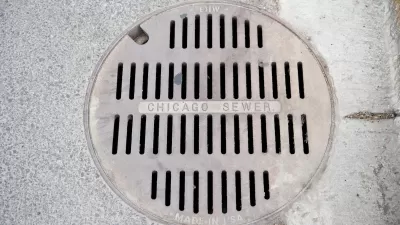Only one coastal city has a sewer system that must handle stormwater as well as wastewater. San Francisco's efforts to adapt its combined sewer-stormwater system has put it on the vanguard of the city's climate adaptation efforts.
"Using combined systems was common practice for urban sewers built before the turn of the 20th century, said [San Francisco Public Utilities Commission] PUC General Manager Harlan Kelly Jr., when wastewater and rainfall both were typically dumped into nearby bodies of water," reports Dominic Fracassa for the San Francisco Chronicle on Oct. 21.
Because the city's sewer system can be easily overwhelmed during heavy downpours, and is vulnerable due to king tides and sea level rise, all of which will become more intense due to climate change, the San Francisco Public Utilities Commission, which provides retail drinking water and wastewater services to the city of San Francisco, is at the forefront of climate adaptation efforts.
The PUC’s improvement program will be rolled out in phases through 2032. The improvements themselves — everything from replacing outdated sewer pipes to raising critical electrical systems in treatment plants in anticipation of the higher sea waters — are designed to respond to how San Francisco’s climate could look in the year 2100.
Another critical element of the PUC plan is an ambitious program of installing bioretention or rain gardens to divert stormwater from the sewer system and allow it to be absorbed into the ground. "[B]y allowing natural processes to take over the work we've been building infrastructure to handle, operations and maintenance costs also fall," according to a 2012 study on green infrastructure co-authored by the American Society of Landscape Architects.
In August, Fracassa reported on a ribbon-cutting by the PUC for the first of the eight rain gardens planned for the Ingleside district, an investment of $7.3 million.
FULL STORY: SF embarking on major projects to bolster sewer system

Maui's Vacation Rental Debate Turns Ugly
Verbal attacks, misinformation campaigns and fistfights plague a high-stakes debate to convert thousands of vacation rentals into long-term housing.

Planetizen Federal Action Tracker
A weekly monitor of how Trump’s orders and actions are impacting planners and planning in America.

San Francisco Suspends Traffic Calming Amidst Record Deaths
Citing “a challenging fiscal landscape,” the city will cease the program on the heels of 42 traffic deaths, including 24 pedestrians.

Defunct Pittsburgh Power Plant to Become Residential Tower
A decommissioned steam heat plant will be redeveloped into almost 100 affordable housing units.

Trump Prompts Restructuring of Transportation Research Board in “Unprecedented Overreach”
The TRB has eliminated more than half of its committees including those focused on climate, equity, and cities.

Amtrak Rolls Out New Orleans to Alabama “Mardi Gras” Train
The new service will operate morning and evening departures between Mobile and New Orleans.
Urban Design for Planners 1: Software Tools
This six-course series explores essential urban design concepts using open source software and equips planners with the tools they need to participate fully in the urban design process.
Planning for Universal Design
Learn the tools for implementing Universal Design in planning regulations.
Heyer Gruel & Associates PA
JM Goldson LLC
Custer County Colorado
City of Camden Redevelopment Agency
City of Astoria
Transportation Research & Education Center (TREC) at Portland State University
Jefferson Parish Government
Camden Redevelopment Agency
City of Claremont





























